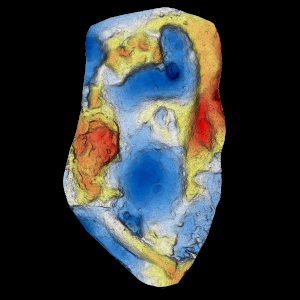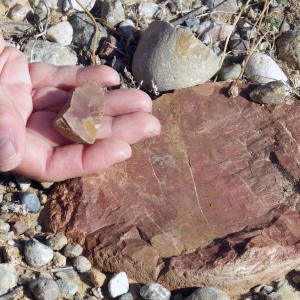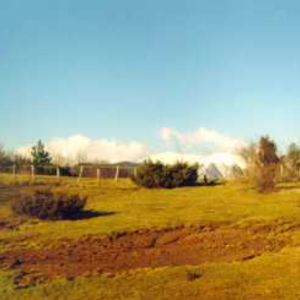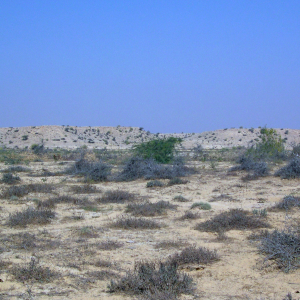Bàsura revisited

Toirano: Bàsura revisited project is a program of archaeological research started in 2016 at the Bàsura Cave, located in the karstic area of Val Varatella, near the village of Toirano in western Liguria (Savona Province, northern Italy). It is an interdisciplinary and cooperation project aiming a complete reanalysis of the whole context.
BJNP – Ba’ja

The Ba’ja Joint Neolithic Project is focused on the excavation of Late Pre-Pottery Neolithic B site of Ba’ja (Petra Greater Area, Jordan). The project is co-directed by Niccolò Mazzucco, Hala Alarashi, and Bellal Abuhelaleh and in cooperation with the Department of Antiquities of Jordan.
CHRONOS

The CHRONOS project (The obsidian route in the central Mediterranean: diaCHRONic pathways and cultural connectiOnS), funded under the PRIN2022 program, aims to model the obsidian distribution in the central Mediterranean. The project aims to continue the research of colleague C. Lugliè.
COO

The project consists of the study and publication of the sites and materials discovered by L. Morricone in Coo in the “Serraglio” and adjacent areas (Late Neolithic; Early Bronze Age; Late Bronze Age, especially Minoanizing and Mycenaeizing phases; Protogeometric Age).
ECO-LOGIC

ECO-LOGIC is a project awarded to Jacopo Gennai within the Progetto di Eccellenza 2023-2027 framework. The aim is to recontextualise the lithic assemblages extracted from the sand mines of Lake Massaciuccoli (LU, Italy).
EGEOLAND

EGEOLAND is carried out by a research group from the Aristotle University of Thessaloniki, in collaboration with Ca’ Foscari University of Venice and the Department of Civilizations and Forms of Knowledge at the University of Pisa, for the study of lithic assemblages from investigations and excavations on the island of Lemnos.
Grevena

The Grevena Project: Archaeological surveys and excavations conducted jointly by the Aristotle University of Thessaloniki (Greece), Ca’ Foscari University of Venice (Italy), and the Department of Civilizations and Forms of Knowledge at the University of Pisa between 1999 and 2021 in the mountains of the northern Pindus range.
FeedingSouth

The project FeedingSouth: Reconstructing Neolithic Livestock Management Strategies in Southern Europe (2025–2028) has been funded under the Young Researchers 2024 – SOE call with the aim of advancing the state of knowledge on early Neolithic pastoral practices in Mediterranean Europe.
MESApennines

MESApennines is a project involving collaboration between CSIC (Spain), the University of Pisa, and the Superintendency of Archaeology Fine Arts and Landscape for the provinces of Lucca and Massa Carrara (Italy). It is focused on the study of the Mesolithic-Neolithic transition in the northern Apennines.
Mitrou (MAP)

MAP is a collaboration between the University of Tennessee and the Directorate of Antiquities of Phthiotis and Evrytania, under the auspices of the American School of Classical Studies at Athens. The project focuses on the study of ceramics ranging from the Late Helladic IIA to the Late Helladic IIIB periods.
NeoNet

NeoNet is a collaborative project aimed at creating an updated open-access database for radiocarbon datings related to the Mesolithic-Neolithic transition in the Mediterranean and Atlantic regions of Europe.
PBM – Monegros

In 2020, the University of Pisa, in collaboration with the Government of Aragon, initiated the excavation of an open-air campsite dating back to radiocarbon dates of approximately 8200 to 7900 years ago. This site is located in the Monegros region (Huesca, Spain) within the Ebro River valley.
Prehistoric Pakistan

For the past 30 years, an Italian Archaeological Mission has been conducting research in Sindh and the Las Bela province of Balochistan, Pakistan. The University of Pisa is collaborating on the analysis and study of numerous lithic assemblages from various historical periods that have been discovered during the multi-year surveys.
OrnaMed

The OrnaMed project is funded within the framework of the Doctoral Program in Ancient Sciences and Archaeology at the University of Pisa (UNIPI). Its objective is to analyze prehistoric ornamental productions, with a particular focus on lithic productions. The geographical scope of the proposed research encompasses the central Mediterranean region during the Neo-Chalcolithic period.
PrehistOman

PrehistOman: The Prehistoric Potential of the Southern Batinah Region. The project was established in 2023 with the aim of expanding knowledge about the prehistoric occupation of the Batinah region through surface surveys and excavations.
Pylos

The Pylos area is the setting for numerous research projects (PONEX, PoN Roof Project, Romanou) in which the University of Pisa is actively collaborating, including the excavation of the Palace of Nestor and the study of recovered ceramic materials.
Rio Tana

The Rio Tana site is located along the ancient course of the Tavana stream, on the southeastern slope of the Fucino basin. In the summer of 2019, a team from the Department of Civilizations and Forms of Knowledge at the University of Pisa resumed investigations in the area with the aim of understanding the original extent of the site and outlining a more precise chrono-cultural framework of the ancient settlement.
SPOT

SPOT is a project aimed at studying personal ornaments from the Neolithic and Copper Age found on the Italian peninsula. The project’s focus is to expand our knowledge of the ornamental practices of early farming communities, seeking to highlight diversities in cultural and symbolic systems among the early agriculturalists.

